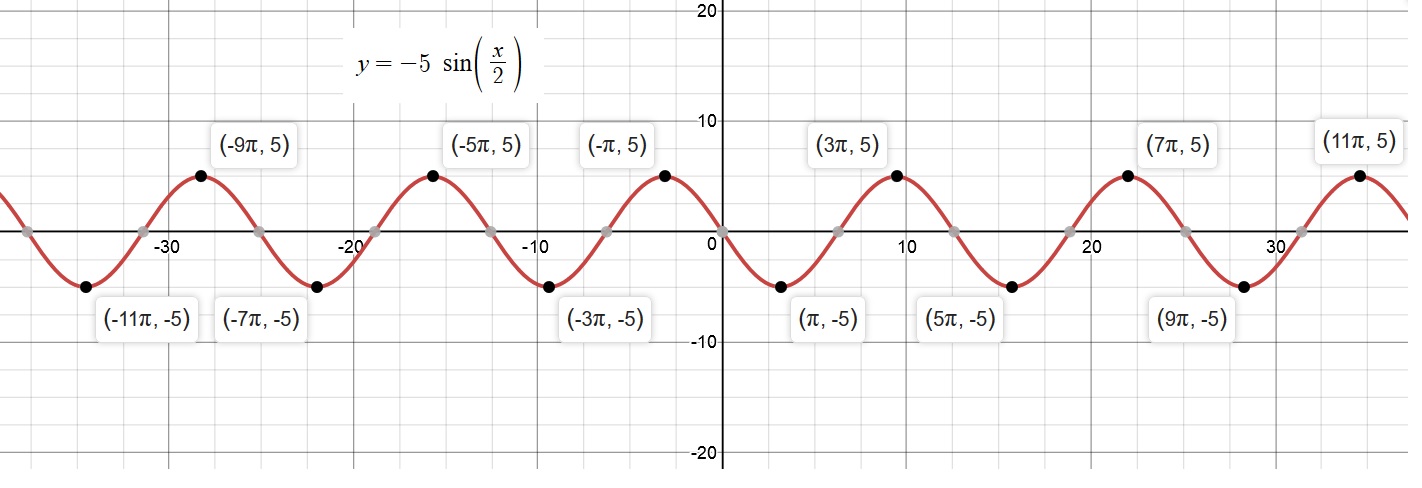How do you find the amplitude, period, and shift for #y = -5sin(x/2)#?
2 Answers
Amplitude
Period
Shift
The Vertical Shift (D) = 0
Explanation:
Investigate the graph given below:

The General Form of the equation of the Cos function:
A represents the Vertical Stretch Factor and its absolute value is the Amplitude.
B is used to find the Period (P):
C, if given, indicates that we have a place shift BUT it is NOT equal to
The Place Shift is actually equal to
D represents Vertical Shift.
We observe that
Amplitude
Period
Shift
The Vertical Shift (D) = 0
Hope this helps.
Explanation:
#"the standard form of the sine function is "#
#color(red)(bar(ul(|color(white)(2/2)color(black)(y=asin(bx+c)+d)color(white)(2/2)|)))#
#"where amplitude "=|a|," period "=(2pi)/b#
#"phase shift "=-c/b" and vertical shift "=d#
#"here "a=-5,b=1/2,c=d=0#
#"amplitude "=|-5|=5," period "=(2pi)/(1/2)=4pi#
#"there is no phase / vertical shift"#

